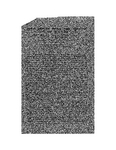- DSpace Home
- →
- Channel Islands
- →
- National Park Service
- →
- California Islands Symposia Documents
- →
- 2nd California Islands Multidisciplinary Symposium
JavaScript is disabled for your browser. Some features of this site may not work without it.
| dc.contributor.author | Wingfield, John C. | en |
| dc.contributor.author | Martin, Audrey | en |
| dc.contributor.author | Hunt, Molly W. | en |
| dc.contributor.author | Hunt, George L. | en |
| dc.contributor.author | Farner, Donald S. | en |
| dc.date.accessioned | 2011-01-28T01:45:06Z | en |
| dc.date.available | 2011-01-28T01:45:06Z | en |
| dc.date.issued | 1980 | en |
| dc.identifier.citation | Wingfield, John C., Audrey Martin, Molly W. Hunt, George L. Hunt, and Donald S. Farner. "Origin of Homosexual Pairing of Female Western Gulls on Santa Barbara Island." In: 2nd California Islands Multidisciplinary Symposium. 1978. 461-466. | en |
| dc.identifier.uri | http://hdl.handle.net/10139/3042 | en |
| dc.description.abstract | In 1968, Schreiber (1970) found that 11.3 per cent of the clutches of Western Gulls (Larus occidentalis wymani) on San Nicolas Island had more than three eggs. He believed that the low hatching success (0.13 per cent) of these clutches was the result of insufficient heat transfer in incubating four or more eggs. On Santa Barbara Island in 1972, 11 per cent of clutches were found to consist of more than three eggs, with 4 . 9 per cent hatching success (Hunt and Hunt 1973). It was believed, at first, that these eggs all came from the same female, as the eggs were of similar color and only two adults could be identified on each territory. Between 1972 and 1976, the frequency of clutches with supernumerary eggs varied between 7 and 13 per cent. It also became apparent that these were laid by female-female pairs. Evidence for female-female pairing found by Hunt and Hunt (1977) is as follows: (1) In three-egg clutches, 67 per cent of eggs were laid two days apart, whereas in the larger clutches many were laid on consecutive days and 11 per cent on the same day. This suggests that at least two females were laying in the same nest. (2) Most eggs in the clutches with more than three eggs were infertile. While 81.5 percent of the eggs of normal clutches showed development, zero to 14 per cent developed in the larger clutches. The few eggs that were fertile resulted from promiscuous, heterosexual matings. Indeed, marked birds have been observed mounting or being mounted by birds other than their mate. In such situations males were off their own territory, and in five of 18 cases females were also off their own territory. (3) The sex of gulls trapped on nests perhaps provides the most convincing evidence. Hunt and Hunt (1977) trapped 10 male and 15 female adult gulls incubating normal clutches (one to three eggs), and one male and 74 females on larger clutches. Most important, on 23 nests containing larger clutches, two females were captured. Thus, it appears that on territories where nests contained large clutches, two females are in attendance with no apparent permanent association of males for at least one to two weeks prior to clutch initiation. These females essentially act as though they are heterosexually paired and remain together from one year to the next, although in one instance a female paired to another female in 1976 was found paired to a male in 1977. They engage in most of the usual courtship and territorial behavior but relatively rarely show mounting and copulation behavior normally attributable to males. If given hatching eggs, they are capable of raising young (G. Hunt, M. Hunt, and S. Anthony, unpubl. field notes). The existence of female-female pairs raises many questions. If the quality of a mate is assessed in courtship, how is the mechanism failing, and how widespread and important is Promiscuous, heterosexual mating? Why do female-female pairs form? For the last question we have two working hypotheses, which are not mutually exclusive. These hypotheses are the subject of this paper. | en |
| dc.language.iso | en_US | en |
| dc.publisher | National Park Services | en |
| dc.subject | Seagulls | en |
| dc.subject | Sea Gulls | en |
| dc.subject | California Islands | en |
| dc.subject | Channel Islands | en |
| dc.title | Origin of Homosexual Pairing of Female Western Gulls on Santa Barbara Island | en |
| dc.type | Article | en |

